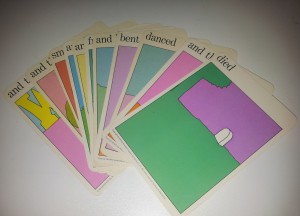EXPLORATION
Martin Scorsese writes that he “love[s] the restrictions of the frame”¹. It can exclude and it can include. It can restrict the knowledge of the audience if we choose for it to do so. Whether they are conscious of it or not, directors produce films indicative of the way in which they see the world. In cinema studies we are always taught that directors do everything for a reason. In my own practice (and especially in group work) I have felt that this is not always the case, but perhaps it actually is – the reasons are just not apparent to myself at the time of ‘making’.
At first, my Sketch Tasks did not appear to be linked, there emerged no common thread; sometimes they felt like they were about nothing (something that looked nice, something that was interesting at the time). The videos are as they have been designed to be; raw, unplanned, dirty, unrehearsed. But they do have things in common. In the creation of my sketch tasks, I have selected what is in the frame, and what is outside of it. Sometimes this was a conscious effort (excluding my shadow or reflection in order to create a more mysterious feeling), other times it was not – but it happened all the same. When I consciously engaged with my surroundings (and broke away from the digital grind) I did not find it hard at all to uncover material that I felt was worthwhile capturing. Once I began to practice experiential learning (as outlined by Mason²), I found I was more frequently stopping to think about what I was looking at and hearing. I found it easier to spot things that would spark my interest.
INTENTION
In my Korsakow film I have set out to connect all of my films in a way that is poignant and reflective of my own experiences. The biggest, most obvious connection being that all the sketch tasks were created by me, and therefore indicative of the way I see the world.
My sketch tasks, being varied and experimental have no common thread – they are not even filmed using the same devices. I used as many different apps and camera devices I could get my hands on in order to best experiment and appreciate what certain devices and applications could provide and others could not. (See earlier posts in regard to my anguish about Android apps)
I thought long and hard about what text I could use to connect the videos and the process and kept coming back to the idea that I wanted to communicate a particular viewpoint (my own). I have chosen to use text from Voltaire’s Candide, because I want my creation, my k-film to be meaningful. Voltaire’s works are of particular interest to me and I find it to be a fairly accessible text. Moreover, the phrases I selected can all stand alone, and at the same time when strung together they create meaning.
REALISATION
I began this task feeling that it was largely an exploration on my part. Having no target audience outlined (in the structured, regulated way one would expect from a media task), it seemed as though we were making it more for ourselves, then for an audience. Like much of the content uploaded onto the internet it begins by being made by the maker, for the maker. Some of it is worthwhile, some of it not so. That is why we need filtering online. My work was not created with an intended audience, it is an exploration of the software. However, I would be interested in receiving feedback from the online community. I am interested in learning more about the people who use Korsakow, and the audiences they target with their works.
I found structuring the kfilm a difficult task. It does allow for a certain degree of manipulation of what can come next, however, I felt that my kfilm would work better if it was more random. It was perplexing to note that when I began my first draft, using a limited array of keywords, the same videos would turn up until their ‘lives’ had been depleted – and then the film would abruptly end. Following this I began to re-think my keywords, grouping my videos to create a structure and flow; ordering (or ranking them) to pave the way for the ending – sometimes this works, and sometimes it does not. Unfortunately, I feel this is inherent in the nature of Korsakow and the kfilm.
I feel that I have been successful in creating a series of sketch videos linked in an interactive and engaging way. Whilst there is no apparent narrative nor an intended audience, there is a common thread in all the videos. The text is all derived from the same source and creates and interesting story about my work and my shared view with Voltaire on the world.
(I feel it’s more appropriate to use story rather then narrative, but I’m still not really sure that is even the best term for it!)
Watch the film here!
